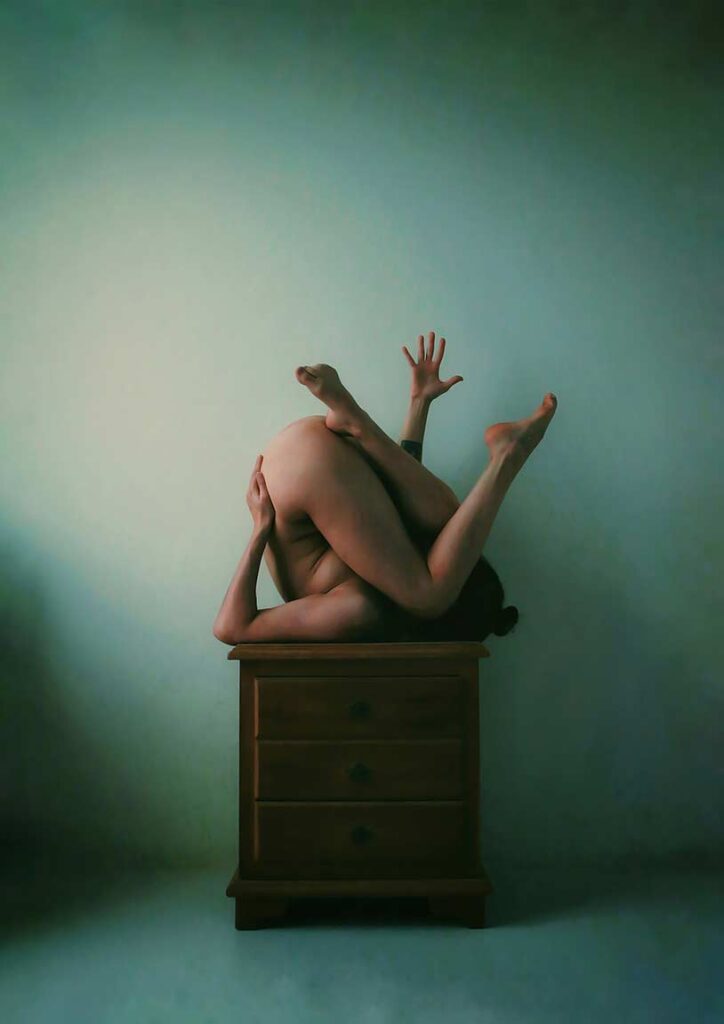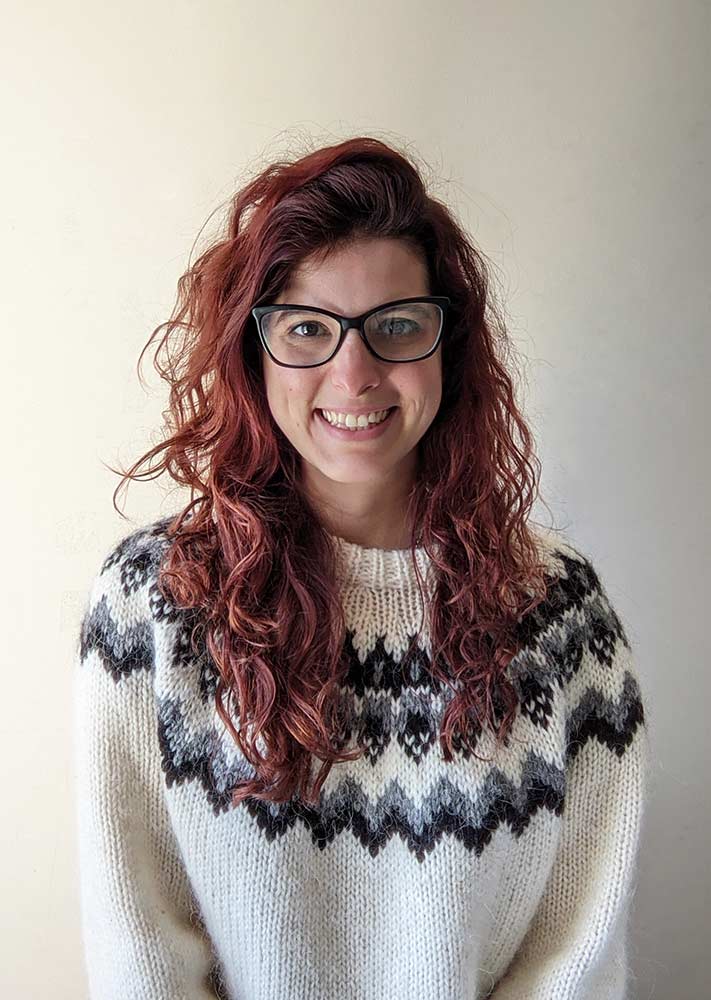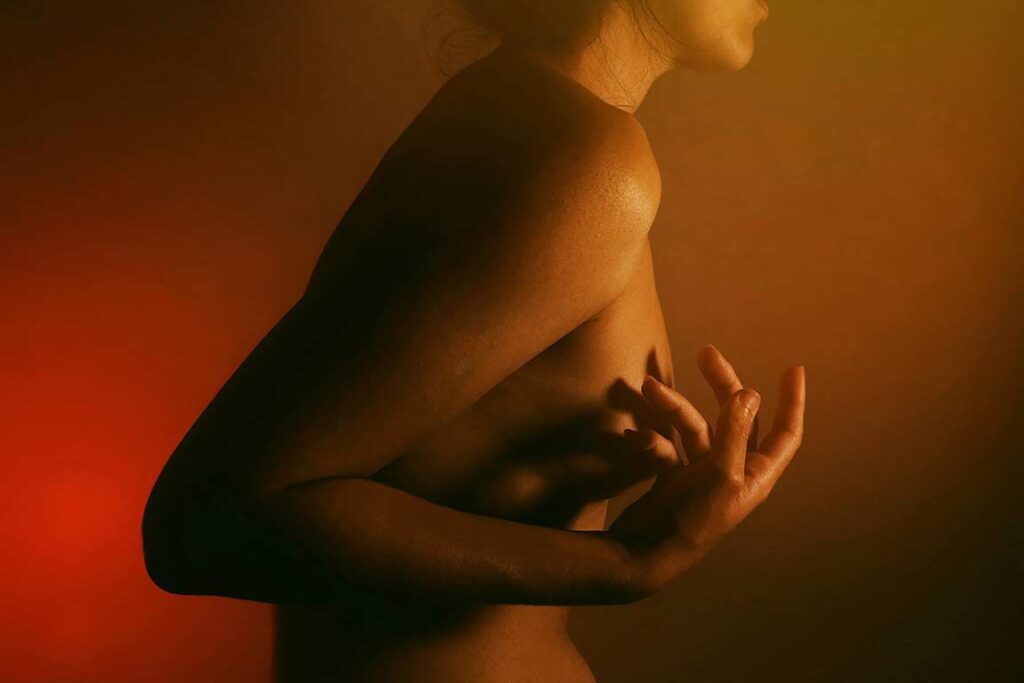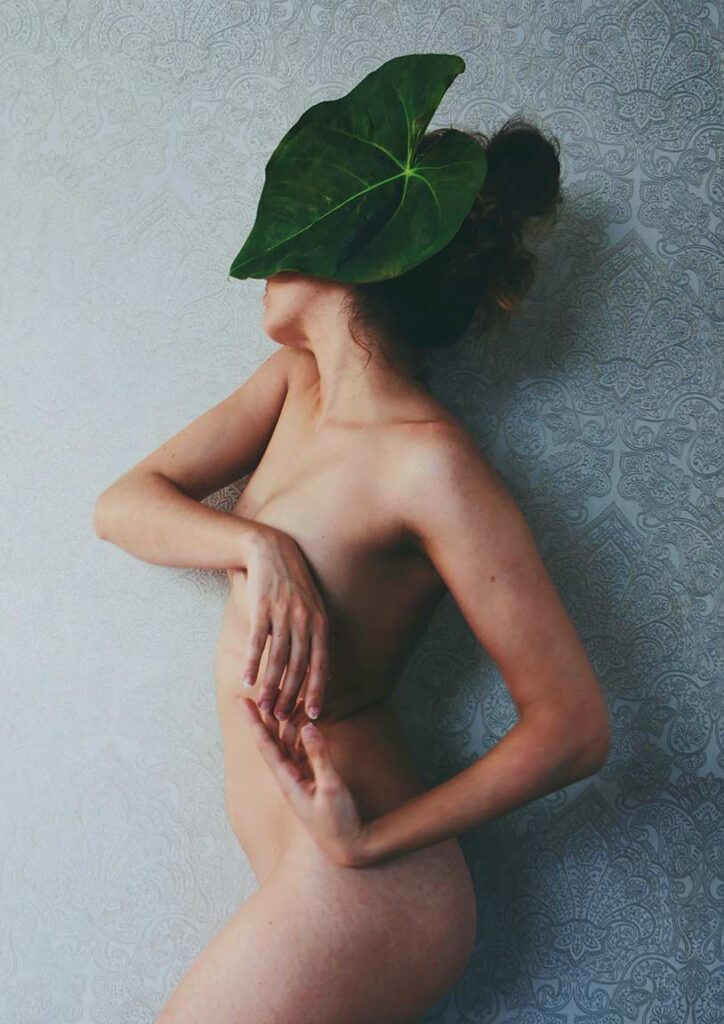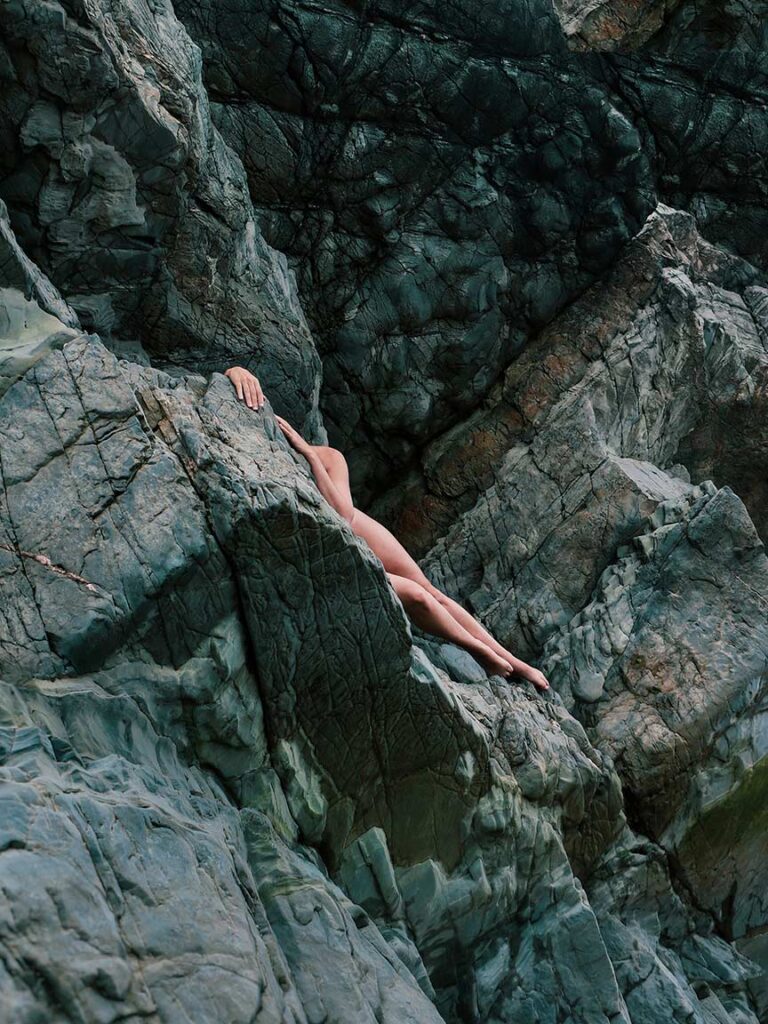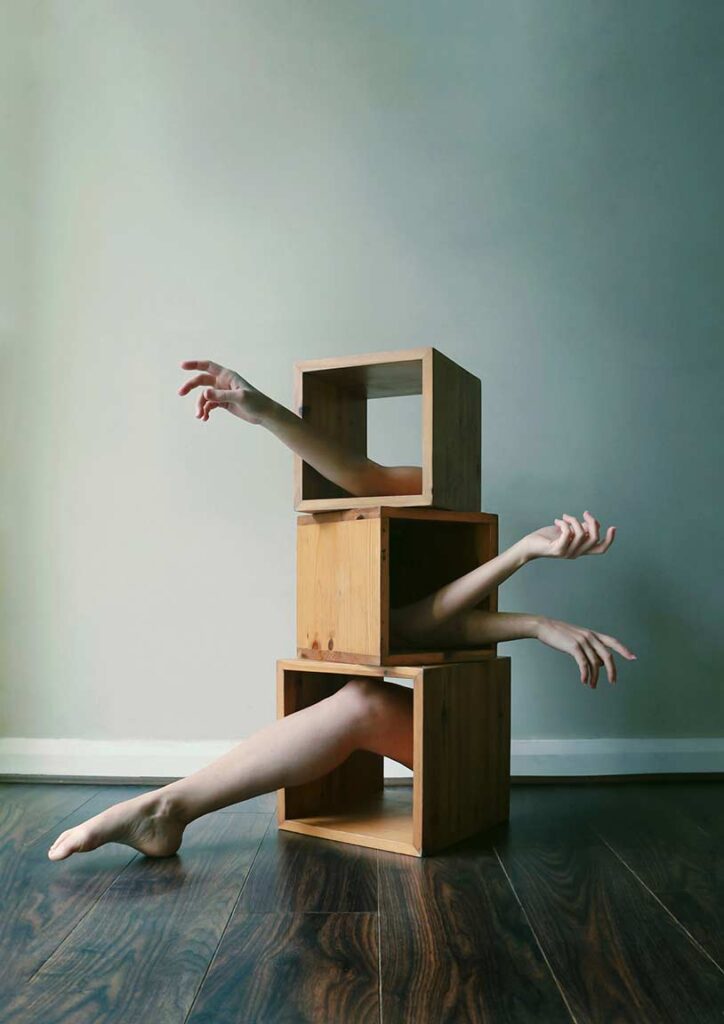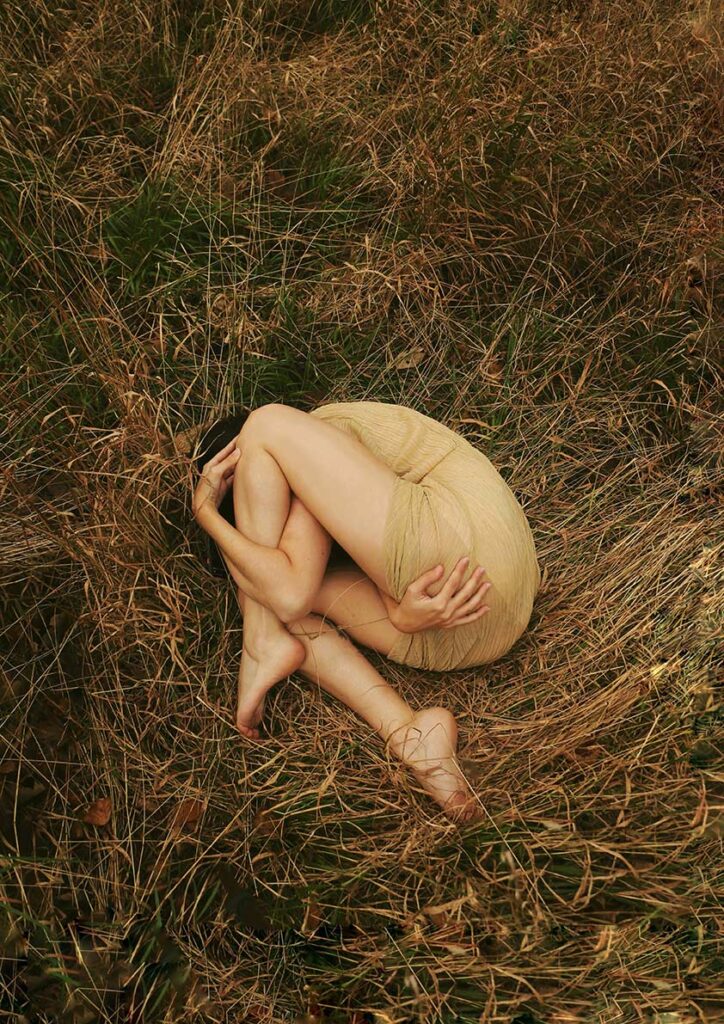
MIKA MORET | SEEKING
“I started this ongoing project of self-portraits over ten years ago to discover myself as a person. Now I see photography as a means to understand my existence. Photography helped me to be kinder to myself, and I am grateful for the improvement of my self-esteem, my body, and what it allows me to do.
Through a mix of techniques, from digital manipulation to purely natural light and composition of the body in nature, the images of this project aim to find an answer to the question of what our place in this world is.
The “Seeking” project started in 2020. I was struggling with the concept of my own identity during isolation. I felt so detached from the things that defined me, which gave me a bittersweet feeling of freedom as if I was so far away from what I used to be. Did that mean I could become a better version of myself then?”
“My love for photography started when my father bought me a small digital camera. I was obsessed with the idea of keeping ephemeral things alive forever. How could I eternalize a moment in time with the simple click of my camera?
I started taking self-portraits as a way to discover myself as a person. Now I see photography as a way to know different parts within me and explore my own body. It helps me connect with my love and self-worth more profoundly.”
Getting To Know: Mika Moret
“I will always tell young artists not to sell themselves short. I still struggle with that quite a lot…we can become our own worst enemies, but if we don’t let people see our art and share our feelings, we are missing an essential part of the human connection that art can bring us.”
Lens Magazine: Please share the background of your photography journey. Did you grow up in a creative environment? What led you to the fine art photography field?
Mika Moret: Ever since childhood, my parents always lit a sense of curiosity about myself and the world around me. I always wanted to explore everything from my surroundings and discover the magic hidden in the corners of my life. I chose to study Filmmaking to help me get a sense of visual storytelling so I could unravel the stories I had inside me, but I decided that was not the right path for me. Photography started as a hobby when I was a teenager when my father bought a small digital camera. From then on, I would walk around my house and my grandmother’s farm for hours photographing all the little details of life, from the tiniest bugs to sunsets that would paint the entire sky orange.
I started taking self-portraits when I was about sixteen and had a complicated relationship with my body and self-image over then.
Taking self-portraits was how I discovered different sides of myself and put a different perspective on my body while trying to find my own self-worth. Fine art photography came into my life very naturally, helping to keep my curiosity and sense of wonder alive and pushing me to find new ways to translate the feelings and stories I have inside of me.
Lens Magazine: Where your inspiration comes from? Is your artistic style influenced by other photographers or a specific art field?
Mika Moret: My inspiration comes from everywhere. There are images I took which were inspired by songs written by Ludovico Einaudi, Ólafur Arnalds, and Max Richter; some that came from sentences of books I was reading; and some can even come from feelings of distress over a situation I read on the newspaper. I think my work is a collection of everything I love; the people, art, and the places. I also love to keep up to date with the artists that I admire (such as Elizabeth Gadd, Paulo Abreu, Lauren Zalenga, and Hazel Coonagh, to cite just a few) to keep myself inspired to create art and as a constant reminder of how powerful and impactful this art can be to those seeing it.
“I will always tell young artists not to sell themselves short. I still struggle with that quite a lot…we can become our own worst enemies, but if we don’t let people see our art and share our feelings, we are missing an essential part of the human connection that art can bring us.”
Lens Magazine: Tell us about the workflow process from the step of the idea until the outcome. Which software do you use for editing? Do you see post-processing as the primary time investment in your work?
Mika Moret: To be honest, not a lot of my images come from preconceived concepts. My photography is intertwined with my identity and internal experiences, and I tend to use it to help with my mental health. Many of my images come from moments when my mental health was not at its best, and I needed something to take me away from my overwhelming mind. For example, the image “Untitled” was created when I was self-isolating in another country and I received the news that my father was a close contact during the pandemic, and it made me extremely worried. I was having a panic attack thinking about the worst-case scenario, and the only thing I could do to calm down was to take my phone out, make an improvised tripod and take photos to express all the confusion and fears I was feeling.
Regarding post-processing, both the editing and the creating parts are primary in my work. Michelangelo once said, “I saw the angel in the marble and carved until I set him free.” The process of photographing and post-processing is a bit like that too. The time I spend creating in front of the camera, trying poses and angles, is seeing the angel in a visual image.
At the same time, the post-processing with the editing afterward releases that into a complete creation from my mind into a visual image. Both processes are just as important, and sometimes the creating part is the most intense, as I need to find what image I want and discover how to get it; sometimes, the editing can take hours or days to reach my goal.
I use a few different programs, but mostly Lightroom and Photoshop. I would also use apps like Snapseed and Picsart for quick editing with my phone for more explicit images.
Lens Magazine: From your personal journey in the fine art photography field, what will be your advice to the young photographer looking for a way of development?
Mika Moret: From my own experience, I will always tell young artists not to sell themselves short.
I still struggle with that quite a lot; even writing this interview was quite hard for me, and I sought advice from so many artists. Because of that, we can become our own worst enemies, but if we don’t let people see our art and share our feelings, we are missing an essential part of the human connection that art can bring us.
Do the art you love and allow people to fall in love with it too. Also, do what you can with what you have at the moment.
Photography can be an expensive hobby/career, and waiting for the best equipment or conditions to take a photograph can be quite paralyzing.
I started taking photos with a very basic digital camera and learned a lot by being curious and snooping around. Some of my images, including those published in international magazines, were taken with a mobile phone with my bedroom wall as a backdrop and edited with an app. Investing in our career/passion is really important, but having a starting point and giving yourself a chance to try, no matter how “small,” is just as important too.
Lens Magazine: What’s the future hold? Any special exhibitions in the upcoming months?
Mika Moret: Right now, I am still finding a way to balance my daytime job with my passion for photography.
I hope to find more time to experiment and be creative. I want to try new mediums, like painting, and see how they can improve my way of communicating my feelings along with my photography. And my goal for the future is to have the opportunity to exhibit in my home country too.
I have a few things to look forward to in the upcoming months photography-wise, such as the fantastic opportunity to be featured in Lens Magazine, being featured in a digital panel at the XIV Florence Biennale as a finalist in this beautiful international competition, and another incredible exhibition I am not allowed to release the details yet.


